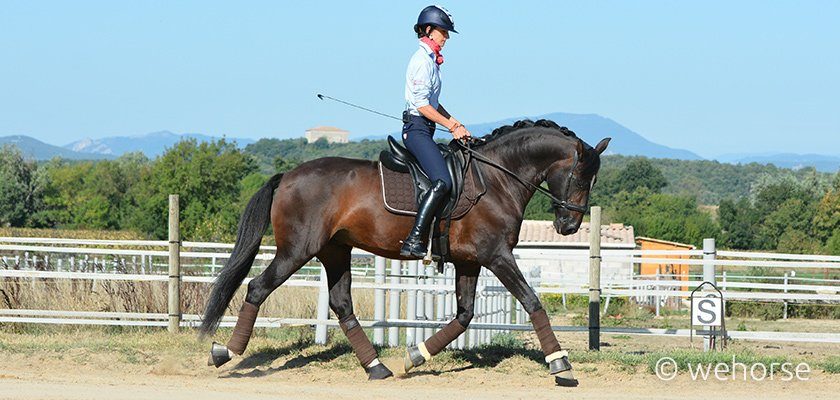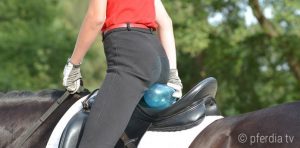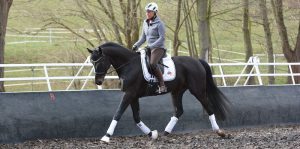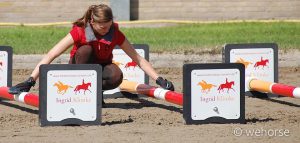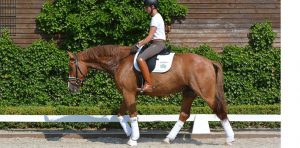More and more riders have been switching to a bitless bridle. When used correctly, precise aids can be given without a bit, allowing difficult exercises to still be ridden. From the almost endless selection of bitless bridles, we’ve selected the best-known and broken them down for you.
Table of Contents:
The side pull
A side pull is perhaps the gentlest bitless bridle. It runs like a halter around the horse’s head, but the noseband has a short cross connection to the cheek pieces so that it fits even better. A side pull is never as loose as a halter but can transmit rein input more accurately. Side pulls come in a variety of styles, and how sharp or soft the side pull is has a lot to do with the features of the noseband. A variant called Equitrense Sidepull can be seen in the photo below showing Alizée Froment with her horse Mistral. The rein pull has a soft effect on the nose without any leverage.
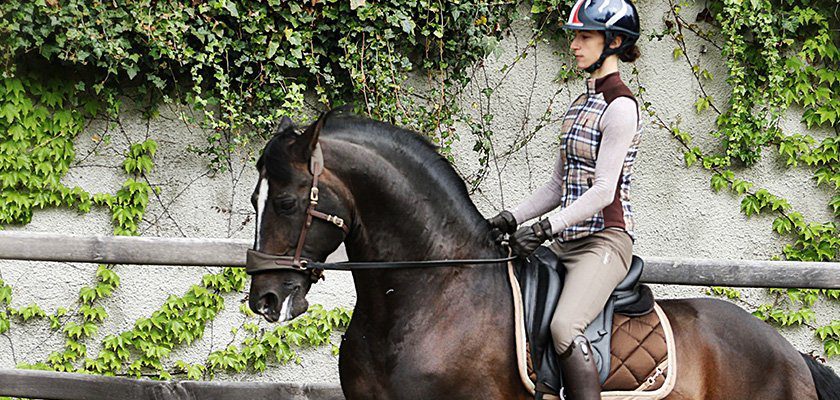
What is a bitless bridle?
Bridles are sold under the name Bitless Bridle, which sometimes hardly differ from the side pull. For example in the photo at the top of this article with Alizée Froment (this bridle is made by the FRA brand). Bitless bridles, in which the reins are simply buckled into the bridle on the right and left without deflection, have the same effect as a side pull.
Originally, a bitless bridle is characterized by a buckle with deflection of the reins. So the right rein is passed under the horse’s head to the left side of the head and the left to the right. As a result, the rein pull has a pushing effect on the horse’s head. Some bitless bridles do not use this deflection at nose level but include the poll. It is important with this type of bridle that the material is so good and supple that the reins do not get caught during the deflection or only give way with a time delay.
Hackamore
Various bridles are called hackamores, the following is about the mechanical hackamore. Externally, the piece of iron on the mechanical hackamore is striking, which is buckled on both sides between the neck strap, noseband, chin strap, and reins. It has extended downward levers called suits. These are available in various designs: short, long or curved, for example. Depending on the height at which the reins are buckled, the leverage is weaker or stronger. It is often used in the Western arena or with show jumpers who don’t react as well to the bit. A hackamore is not a bridle for beginners! The impact is clear and handling must be learned.
Micklem
A Micklem can be used with or without a bit. It looks like a bridle with a special noseband to which additional rings can be attached. The special course of the noseband is typical, leaving out nerve regions, but fixed on two levels of the horse’s head, namely one quite high up on the upper jaw and one quite far down, where flash straps can sit. If you unbuckle the bit, it can be used as a side pull or as a cavesson for lunging without a fixed insert. The rings on the nose piece of the Micklem are attached for this: To be able to buckle a lunge line here, for example. Some horses like the Micklem very much and walk much better with it, others don’t respond well to this type of buckle around the nose. There is only one thing that helps: try it out!
Rope halter
A rope halter consists of thin rope and is not connected by metal parts, but gets it’s fit with knots. These knots also give a very direct effect on the horse’s nose, for example when turning sideways. The rope halter is often used for ground work and some people also like to ride with it. A good fit is important, otherwise, the knots can press on nerve tracts. The rope halter should not be underestimated – the thin ropes have a very direct effect and can appear sharp! Our courses with Peer Claßen and Jenny Wild show you how gently the rope halter should be handled. The horses can already feel when the lead rope is sagging whether you lift it a few centimeters or not.
Cavesson
The cavesson is characterized by the fact that it guides the horse’s nose very precisely, making it easier to lunge in position and bend without a bit. It is not made to ride in. In our courses with Anja Beran with her young horses, you can see how she uses it with a snaffle. The bit rests in the horse’s mouth to get used to it, but the cavesson is the actual working tool. A cavesson is also an important tool when working in hand as trainer Kathrin Roida shows in her courses. A good fit is important because many important nerve tracts run along the sides of the horse’s nose. The basic rule is to keep two fingers width away from the cheekbone, as that is where the angular bone that lies diagonally under the horse’s eye also applies here!
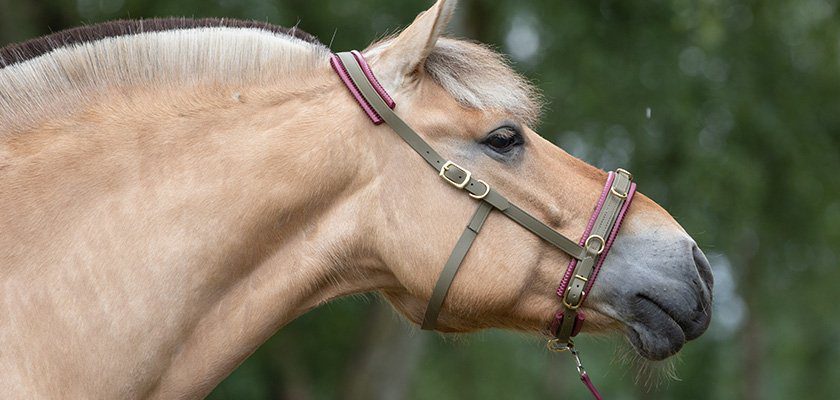
What is an equizaum?
The Equizaum is a Biothane bridle that offers various buckle options. This bridle can be seen in the picture above with the Norwegian Fjord. It can be used as a cavesson with a soft or firm insert, side pull, and bitless bridle.
Bosal
Originally, the headpiece called a bosal was used in addition to a bit. Today, the usage of bosal as a bitless bridle is much more common. A fairly firm, large nose piece is characteristic of the bosal. It is teardrop-shaped, high on the nose, and converging under the chin. It should fit the horse’s nose well, without creating punctiform pressure, and still be somewhat flexible.
With good products, the nose piece is made of rawhide, it is comparatively thick and is braided from various strands until a bulge is formed. So-called nose buttons can be seen to the right and left of the nose piece, these are the points at which the cheek pieces that lead to the poll are attached. The slightly thinner bosal strands that lead from there under the chin are called cheeks. This means that the headpiece also works laterally. Under the chin, the nose piece tapers down to a point. Another characteristic of the bridle is the knotting of the cable reins, called Mecante, on the lower part of the nose.
Pay attention though, as there is a confusion of names: The bosal is also called classic hackamore. In addition, in the Parelli training system, for example, knot halters that are ridden with one hand and use the rein rope, called lead rope, as the lower knot, are also referred to as hackamores.
Wheel of Fortune
The Wheel of Fortune is a gentler twist on a mechanical hackamore. There are no suits, just a metal disc with various spokes. Depending on which spoke the rein is buckled into, the rein pull is more or less passed on to the horse’s poll and not just to the nose.
Riding in a bitless bridle can be an enjoyable change, but regardless of the style of bitless bridle you are using, it is ideal to refine your aids and help your horse transition smoothly. For more helpful exercises and tips to refine your aids, visit our website.


